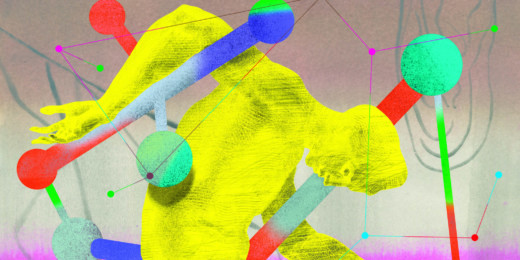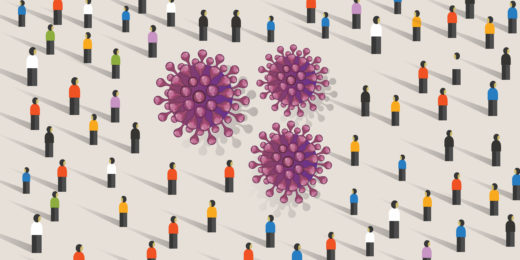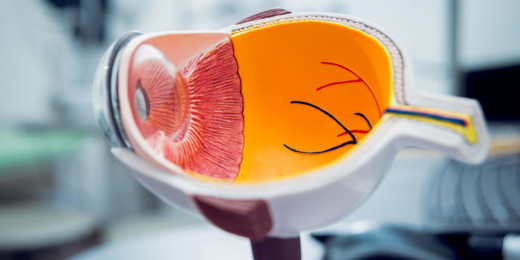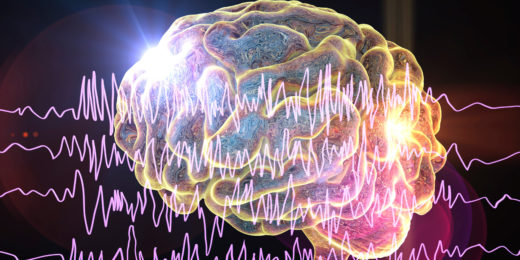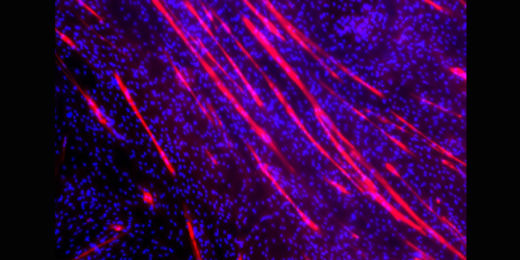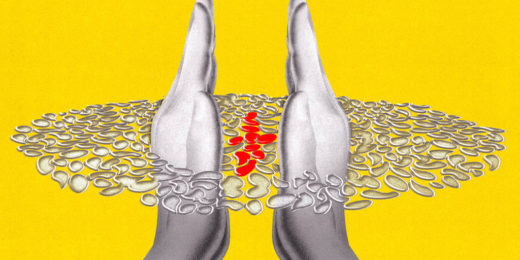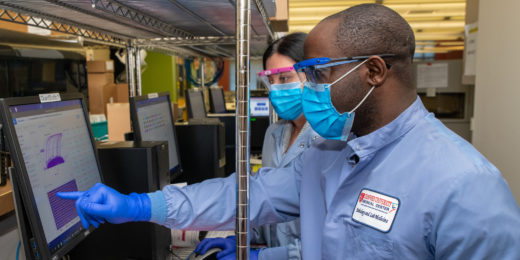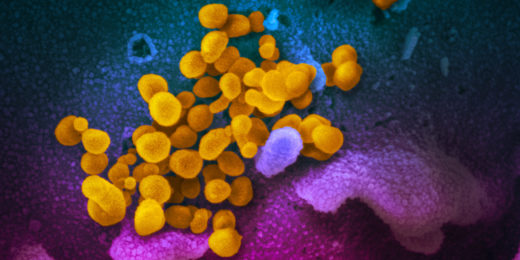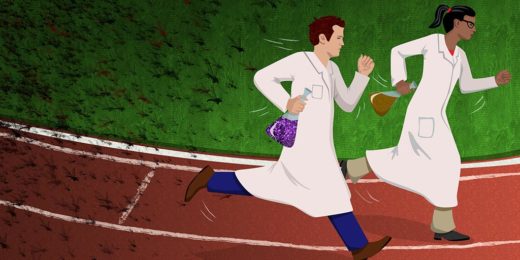Stanford Medicine magazine explores the molecules behind human biology and how understanding them fuels medical discoveries and innovations.
Category: Drug Development
Preparing for the viruses we’ve yet to meet
Researchers at Stanford Medicine are working to develop antivirals to stop the current pandemic and prevent ones.
Precision medicine predicts best ulcerative colitis care for teens
Stanford researchers are developing a faster way to match each ulcerative colitis patient with the treatment that will work best for them.
Bringing principles of ethics to AI and drug design
Researchers discuss the need for ethics and its integration into research projects that harness artificial intelligence.
New drug gives patient his sight back
A Stanford patient improved greatly after being the first person with sight-threatening thyroid eye disease to receive the drug teprotumumab.
Small molecule lends big hope for brutal seizure disorder
Stanford researchers are investigating the use of a small molecule to treat Dravet syndrome, a devastating childhood neurologic disorder.
Can Prozac fight brain cancer?
The common antidepressant Prozac melts away glioblastoma tumors in laboratory mice, suggesting possible treatment for the deadly cancer.
Engineered tissue sent into space to test muscle loss drugs
To help us understand muscle loss as we age, a Stanford Medicine research team’s engineered tissue is sent to the International Space Station.
Keeping treatment-resistant skin cancer cells in check
Anthony Oro is devoted to understanding the origin of basal cell carcinomas. Now he's found how some become resistant to a common treatment.
Computer simulation may yield new COVID-19 drug
Stanford Medicine researchers have discovered a drug that could potentially be used to stave off SARS-CoV-2, the virus that causes COVID-19.
COVID-19 lab manager came to ‘where the fire is burning’
Obadia Mfuh Kenji joined Stanford after the pandemic's first surge in May 2020, overcoming challenges to help deploy COVID-19 testing.
Seeking a less-burdensome treatment for Diamond Blackfan anemia
Stanford researchers have found a good drug target for treating Diamond-Blackfan anemia, a genetic disease that impairs red blood cell formation.
Researchers formulate new ultrafast insulin
Stanford University bioengineers are developing a faster-acting formulation of insulin that can help diabetes patients better regulate their blood sugar levels.
How remdesivir works, and why it’s not the ultimate coronavirus killer
How exactly does the antiviral drug remdesivir counter SARS-CoV-2 – the coronavirus strain responsible for COVID-19? And how well?
The race for a COVID-19 vaccine: What’s ahead
A Stanford microbiologist describes the invigorating, yet sobering race to develop an effective vaccine against COVID-19.
Stanford’s new Innovative Medicines Accelerator is already contributing to COVID-19 effort — and much more is planned
The Innovative Medicines Accelerator builds on existing programs at Stanford — but fills in gaps to help researchers turn ideas into drugs.


